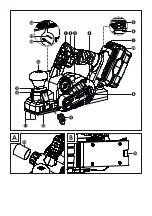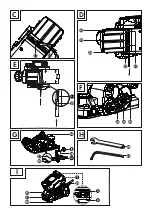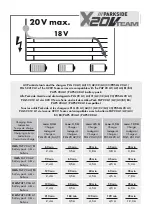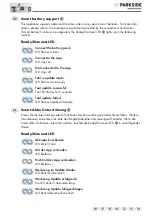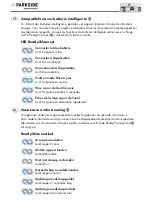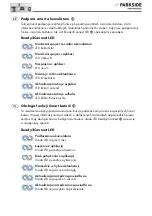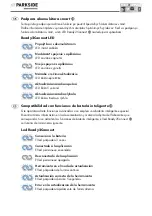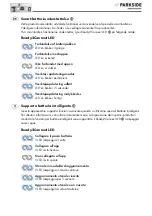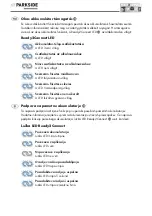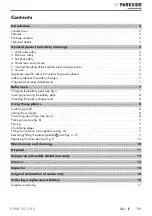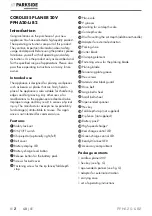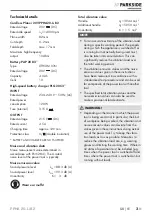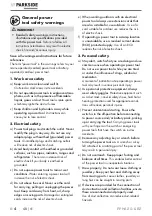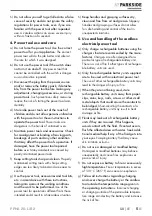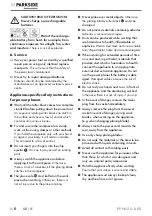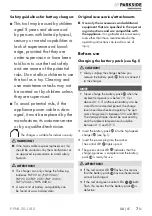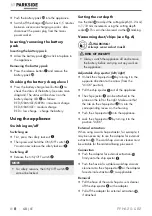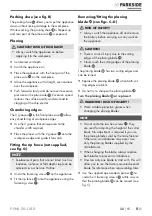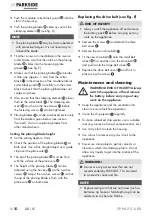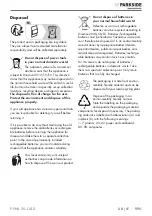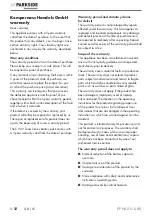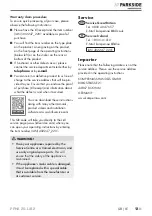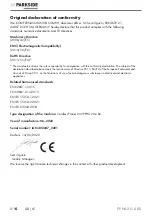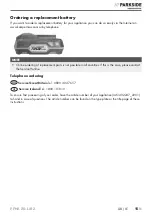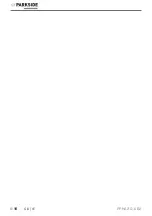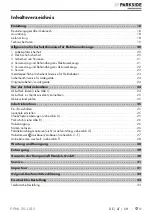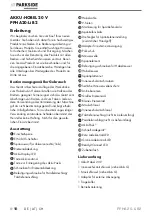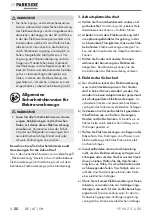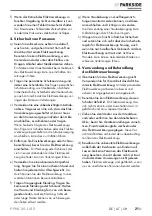
PPHA 20-Li B2
■
6
│
GB
│
IE
CAUTION! RISK OF EXPLOSION!
Never charge non-rechargeable
batteries.
Protect the recharge-
able battery from heat; for example, from
continuous exposure to sunlight, fire, water
and moisture.
There is a risk of explosion.
6. Service
a)
Have your power tool serviced by a qualified
repair person using only identical replace-
ment parts.
This will ensure that the safety of
the power tool is maintained.
b)
Never try to repair damaged batteries.
Batteries should only be maintained by the
manufacturer or an approved customer service
centre.
Appliance-specific safety instructions
for power planers
■
Wait until the cutter block comes to a complete
standstill before putting down the power tool.
An exposed, rotating cutter block can catch in
the surface and cause a loss of control which
could result in serious injuries.
■
Fix and secure the workpiece to a sturdy
work surface using clamps or other methods
.
If you hold the workpiece only with your hand
or against your body, it will remain unstable.
This can lead to a loss of control.
■
Do not insert your fingers into the chip
ejector .
You can injure yourself on rotating
parts.
■
Always switch the appliance on before
applying it to the workpiece.
Otherwise,
there is a risk of a kickback if the planing blade
catches in the workpiece.
■
The plane sole must lie flat on the work-
piece when working.
Otherwise, there is a
risk of injury due to the plane jamming.
■
Never plane over metal objects.
Otherwise,
the planing blade/cutter block
could be
damaged.
■
Do not process materials containing asbestos.
Asbestos is a known carcinogen.
■
Dusts can be produced while working that
are hazardous to health, inflammable or
explosive.
Wear a dust mask and use a suitable
dust/chip extractor. Some dusts are carcinogenic.
■
When working for extended periods of time
on wood and, in particular, materials that
produce dust which is hazardous to health,
connect the appliance to an appropriate
external dust extraction appliance. Do not
use the power planer if the battery is dam-
aged.
Damaged cables increase the risk of
electric shock.
■
Do not rest your hands next to or in front of
the appliance and the area being worked.
Otherwise, there is a risk of injury if you slip.
■
In the event of danger, remove the mains
plug from the socket immediately.
■
Always remove the plug from the power
socket in event of danger, during work
breaks, when working on the appliance
(e.g. when changing planing blade).
■
Always route the power cord towards the
rear, away from the appliance.
■
Use only sharp planing blades.
■
Do not soak the materials or the area to be
processed with liquids containing solvents.
■
Avoid all contact with rotating parts.
■
Never use the appliance for purposes other
than those for which it was designed, and
only use original parts/accessories.
■
Hold the appliance firmly while working.
Ensure that your stance is secure and stable.
■
The appliance must always be kept clean,
dry and free from oil or grease.
Summary of Contents for PPHA 20-Li B2
Page 3: ...B A...
Page 4: ...H C D F E 20a G 28a I...
Page 27: ...PPHA 20 Li B2 16 GB IE...
Page 45: ...PPHA 20 Li B2 34 DE AT CH...
Page 145: ...PPHA 20 Li B2 134 ES...
Page 161: ...PPHA 20 Li B2 150 DK AT CH...
Page 209: ...PPHA 20 Li B2 198 SI...

